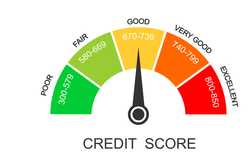Inflation: What It Is, How It Impacts The Value Of Your Money

Our evaluations and opinions are not influenced by our advertising relationships, but we may earn a commission from our partners’ links. This content is created by TIME Stamped, under TIME’s direction and produced in accordance with TIME’s editorial guidelines and overseen by TIME’s editorial staff. Learn more about it.
If you run to the grocery store and purchase a staple, such as butter or eggs, it will undoubtedly cost you more than it did your mother or grandmother. This is because purchasing power, how much a dollar can actually buy, decreases over time. Why? Because of the effect of inflation.
Inflation is a sustained rise in general prices. If you see a sudden spike in the price for a particular good, whether it be gas or milk or housing or airline tickets, it is not necessarily considered inflation (though it could be a harbinger of it). Prices must rise across the board before inflation is considered to be in play.
Rising prices are a feature of all advanced economies. Indeed, the Federal Reserve considers an inflation rate of 2% annually to be healthy. Unfortunately, if the rise gets too high, it can wreak havoc on consumers’ budgets.
Coming out of the COVID-19 pandemic, there have been anxieties that America’s inflation rate is just that—too high.
This is partly due to the pandemic era coinciding with the end of a more than decade-long run of the twin economic balms of low inflation and interest rates, which followed the Great Recession of 2007 to 2009. Are the anxieties justified? Let’s explore.
Inflation affects what your money can do for you. It occurs when the purchasing power of money goes down over time, with the result that it takes more money to buy the same goods or services. The higher the inflation rate, the fewer goods and services a dollar can buy.
Even small changes can have significant results. For example, in 1996, a gallon of milk in the U.S. cost $2.55, according to data from the Federal Reserve Bank of St. Louis. In 2024, that same gallon of milk costs $3.96. The price has risen by 64% in 28 years, for an average annual inflation rate of 2.3%. The rate may seem low, but the price hike less so.
So wait, if purchases are more expensive, isn’t inflation bad? Yes and no.
For many economists, low and predictable inflation can encourage consumers to make purchases because the incremental price increases are small and thus manageable. This, in turn, stimulates the economy. If incomes rise, and they usually do over the long term, that should compensate for the price increases.
Unfortunately, income doesn’t always rise fast enough to cancel out price increases. For example, wages are considered “sticky,” meaning they change less frequently than prices. In effect, the price of gas or milk changes more often than salary or wages are renegotiated.
This can be especially challenging for those living on a fixed income, who see their purchasing power inch downward over time. Social Security attempts to mitigate this problem by providing an annual cost-of-living adjustment, which is determined by the inflation rate. In 2024 that adjustment is an increase of 3.2%.
The precise causes of inflation are the subject of macroeconomic debate, but a few mechanisms are commonly mentioned. Here are three of the more popular ones.
This refers to when there’s more demand for goods and services than supply. In these cases, demand continues to increase, while the available supply stays the same or even declines. In effect, the goods and services become scarcer, and it takes more and more money to purchase them.
This refers to inflation being driven by an increase in the cost of wages and materials. When the prices of materials and labor become more expensive, the cost of production increases, decreasing the supply. The result? It takes more money to buy goods and services.
People’s expectations will also impact purchasing power. For example, if people believe that inflation will occur, they may demand higher wages to offset the expected increase in prices.
Economists chart inflation rates by documenting the changes in how much it costs to pay for what’s known as a “basket” of commonly used goods and services. This is called a “price index,” which is “a series of summary measures of the period-to-period proportional change in the prices of a fixed set of consumer goods and services of constant quantity and characteristics, acquired, used, or paid for by the reference population,” according to the Organization for Economic Co-operation and Development (OECD).
These indexes are intended to show the purchasing power of money, or, in other words, the actual value of a dollar.
In the U.S., inflation is measured through the Consumer Price Index (CPI), which includes housing and food purchases. The U.S. Bureau of Labor Statistics publishes the CPI every month. The figures are used, among other things, to set Social Security payments, make cost-of-living adjustments, and establish thresholds for welfare programs.
However, the CPI is not the only price index that can be used. Some other indexes include:
The Bureau of Labor Statistics also publishes the first two, while the last comes from the U.S. Department of Commerce Bureau of Economic Analysis.
The U.S. Bureau of Labor Statistics reports that ending March 2024, the unadjusted monthly inflation rate was 3.5%, 0.3% higher than the rate of 3.2% measured at the end of February. Let’s put this in some context.
The COVID-19 pandemic sent U.S. inflation spiraling upward, from a monthly rate of 1.5% in March 2020 to a high of 9.1% in June 2022. It has declined steadily since then, brought to heel at least in part by increases in the federal funds rate, which went from a low of 0% in March 2022 to 5.25% as of March 2024.
The rise in the inflation rate is most commonly blamed on shocks to food and energy prices at the start of the pandemic and then problems with the supply chain. Interestingly, inflation was higher in Europe and the U.K. during the pandemic and has decreased more rapidly in the U.S. than it has there. Indeed, as of July 2023, the U.S. had a lower inflation rate than the other members of the Group of 7 (G7): Canada, France, Germany, Italy, Japan, and the U.K.
This might suggest that the U.S. public's anxieties over inflation are, while entirely understandable, more a result of perception than reality.
Naturally, investors will want a way to protect themselves from inflation. While investors try many ways to accomplish this, here are some common strategies.
A standard recommendation to guard against inflation is the 60/40 split, holding 60% in stocks and 40% in bonds in your investment portfolio. The assumption is that it will allow your portfolio to continue to grow, even during inflationary times. Goldman Sachs predicts a return of between 4% and 5% in 2024 with this strategy.
When inflation climbs, the costs of renting and property tend to follow. That’s why real estate investments are often listed as an effective way to hedge against inflation. For instance, this could mean acquiring stakes in real estate investment trusts (REITs), which are companies that profit from rentals. Real estate crowdfunding platforms such as RealtyMogul offer REITs to non-accredited investors.
The U.S. Treasury provides another way to guard investments against inflation. Treasury inflation-protected securities (TIPS) are fixed to the CPI. This means that when inflation goes up, so does the principal, and it decreases when inflation does. However, if at maturity, the value of the TIPS is below the original amount of principal, you still get the original amount. You can purchase TIPS directly through Treasury Direct, and online brokerages such as Public allow you to invest in TIPS through ETFs or mutual funds.
Putting your money in a high-yield savings or checking account can reduce inflation’s bite. They have higher returns than regular savings and checking accounts and can keep your money from depreciating too quickly.
To hedge against inflation means to make an investment specifically to account for it. Such investments are expected to retain value during periods of inflation, so investing in them can prevent the value of your money from slipping.
One popular asset class is commodities, which the Financial Industry Regulatory Authority (FINRA) defines as basic goods of everyday life. These include wheat, coffee, precious metals, livestock, and oil and gas.
Another approach would be to ensure that you have a well-diversified portfolio. The different investments are meant to counteract one another, another form of hedging, allowing your portfolio’s worth to sustain through periods of high inflation.
Inflation is the tendency of prices across the board to increase over time. While a slight amount of inflation is expected (and even desired) in all advanced economies, too much can cause trouble, and people are understandably eager to prevent the purchasing power of their money from falling. Ways to do so include high-yield bank accounts and diversifying your investments.
The monthly inflation rate as of March 2024 stands at 3.5% and is on a largely downward spiral. No one can say for sure what the cause(s) may be, but generally, it is presumed more than not to still be a response to the lingering economic effects of the COVID-19 pandemic, as mitigated by the Federal Reserve’s manipulation of the federal funds rate.
Low inflation levels can spur economic activity by encouraging consumers to continue making purchases. However, too much inflation diminishes the value of wages and fixed incomes as purchasing power decreases. Extreme levels of inflation can spiral out of control.
The Inflation Reduction Act is an American law promulgated by the Biden administration and passed by Congress in 2022 that made a number of significant investments in the country. It was argued that the act would reduce inflation by keeping prescription drug prices low (by allowing Medicare price negotiations) and encouraging clean energy production (through economic incentives).
The information presented here is created by TIME Stamped and overseen by TIME editorial staff. To learn more, see our About Us page.



